An Electronic Watering Can Circuit Diagram

Author : Robert Edlinger







 The main function of the tuner is to select the RF signals from the desired frequency spectrum wave on VHF and UHF and more signs in the air Changing RF variable into a fixed IF frequency and to provide sufficient strengthening to cover the original data that has been transmitted.
The main function of the tuner is to select the RF signals from the desired frequency spectrum wave on VHF and UHF and more signs in the air Changing RF variable into a fixed IF frequency and to provide sufficient strengthening to cover the original data that has been transmitted.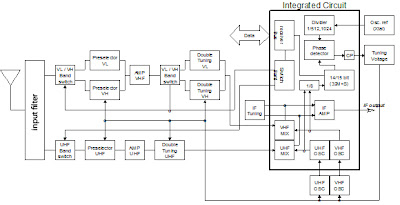




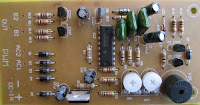
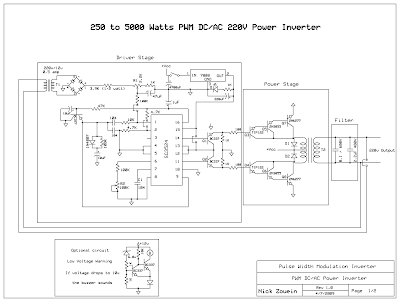 |
| Schematic Inverter 5000W with PWM (Pulse Width Modulator) |
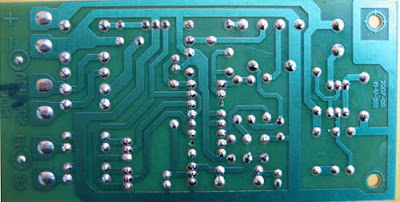 |
| Layout PCB Inverter 5000W with PWM (Pulse Width Modulator) |





One of the more difficult aspects when making a control or security system that uses a PC (a burglar alarm using a PC, for example), is the connection of the sensors to the computer. In addition to typically requiring specialist interface expansion boards, the writing of the program that includes interrupts is often also an insurmountable obstacle. But when only a simple system is concerned consisting of, for example, four light barriers or, if need be, trip wires giving a digital on/off signal when uninvited guests enter, then a much cheaper but nevertheless effective interface is possible.
For this interface we use an (old) computer keyboard. This contains as many switches as there are keys. These switches are scanned many times per second in a matrix in order to detect the potential press of a key. The number of columns is usually eight (C0–C7 in the schematic); the number of rows varies for each type of keyboard and can range from 14 to 18 (R0–R17 with the H T82K 28A keyboard encoder mentioned in the example). To each switch there is a single column and a single row connection.
Circuit diagram :

Control Interface via PC Keyboard Circuit Diagram
The intention of the circuit is that sensor A will ‘push’ the letter A, when it senses something. This requires tracing the keyboard wiring to figure out which column and which row is connected to the A key. One of the four analogue switches from the familiar CD4066 CMOS IC is then connected between these two connections; that is, in parallel with the mechanical A key on the keyboard. When the Control-A input of the CD4066 is activated by sensor A, the letter A will be sent to the computer by the key-board. The PC can then act appropriately, for example by entering the alarm phase.
The system is not limited to (burglar) detection using a PC. The remote control of a TV set or other electronic devices can also be operated with a 4066 in the same way; for example to scan through a number of TV channels in a cyclical fashion. To do this, you could, for example, shunt the ‘next channel’ button using one of the 4066 switches, which itself is activated by a 1-Hz square wave generator.
In the schematic only switches A and B of the CD4066 are connected to the keyboard. You can, of course, use all four of the switches and if you need more than four you can use multiple CD4066 ICs. The indicated wiring between the keyboard IC and the 4066 is an example only, and each ‘typed’ letter has to be determined by the user for the specific keyboard that is used. It is important that each CD4066 switch is always connected between a row- and a column connection. The output signal from the sensors has to be suitable for the CD4066 and the power sup-ply voltage of 5 volts used by the keyboard. The power supply for the CD4066 may be obtained from the keyboard.
Author : Jacob Gestman Geradts - Copyright : Elektor

On the amplifier circuit using ic STK, the same as my previous posting. However, in the above circuit has 2 inputs and 2 outputs, or commonly called a stereo amplifier. This issue of power amplifier 2 x 18Watt and has impedance 8. To stress that it takes about 35-38Volt.






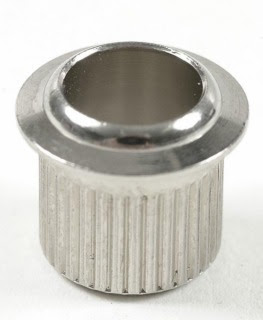
This circuit is purposely presented with many loose ends (not literally, of course) to stimulate experimenting with RF circuitry at a small outlay. Looking at the circuit diagram you may recognize a modified version of the SW Converter for AM Radios described elsewhere in this issue. The modifications were necessary to make the circuit compatible with a digital rather than analogue AM car radio. The main difference between digital AM radios and their all-analogue predecessors is that tuning is in 9 kHz (some-times 4.5 kHz steps) in compliance with the international frequency allocation for the band. Obviously, that particular step size, desirable as it may be on MW, is a stumbling block if you want to use a digital AM receiver in combination with a frequency step-up converter for SW, where chaos reigns and there is no fixed step size. The first attempt was to make the crystal oscillator variable by about 5 kHz each way.
Circuit diagram :

SW Converter for Digital AM Car Radio Circuit Diagram
Unfortunately, despite serious efforts, the crystal could not be pulled more than 1 or 2 kHz so another solution had to be found. After studying the NE/SA602/612 datasheet, it was found that a variable LC based oscillator was the best alternative. The circuit worked after winding a resonant LC circuit and adding a 0.1 µF series capacitor to block the DC component on pin 6 of the NE602 (612). When the tuning was found to be a bit sharp with the original capacitor, a simple bandspread (or fine tuning) feature was added by shunting the LC resonant circuit with a lightly loaded 365 pF tuning capacitor (C10) which, like the main tuning counterpart, C8, was ratted from an old transistor radio. The tuning coil, L1, consists of 8 to 10 turns of 0.6-0.8mm dia. enamelled copper wire (ECW) on a 6-8 mm dia. former without a core. With this coil, frequency coverage will be from about 4 MHz to 12 MHz or so. Details on Tr1 may be found in the referring article.
Note that no tuning capacitor is used on the secondary — the input stray capacitance of the NE602 (612) does the trick. A BFO (beat frequency oscillator) was added to enable SSB (single sideband) signals to be received. The BFO built around T1 is simple, has a heap of output and is stable enough to hold an SSB signal for a few minutes without adjustment. The BFO frequency is tuned with C3. Tr2 is a ready-made 455 kHz IF transformer whose internal capacitor was first crushed and then removed with pliers. When S2 is closed the BFO output signal is simply superimposed on the NE602 (612) IF output to the MW radio. The converter should be built into a metal box for shielding. If you find that the BFO gives too much output, disconnect it as suggested in the circuit diagram and let stray coupling do the work. Sensitivity, even on a 1-metre length of car radio aerial, is quite amazing. Bearing in mind that most of the major international SW broadcasting stations like Radio NHK Japan, Moscow, BBC etc.) generate enough power to make sure that you will hear them, it is still quite exciting to hear such signals for the first time on your car radio.
Author : P. Laughton, VK2XAN – Copyright : Elektor Electronics

P1 : 22K Dual gang Log Potentiometer
R1 : 15K
R2 : 220K
R3 : 100K
R4 : 33K
R5 : 68K
R6 : 50K
R7 : 10K
R8,R9 : 47K
R10,R11 : 2R2
R12 : 4K7
R13 : 4R7
R14 : 1K2
R15,R18 : 330K
R16 : 680K
R17,R19 : 220K
R20,R21 : 22K
C1,C2,C3,C4 : 10µF/25V
C5,C7 : 220µF/25V
C6,C11 : 100nF
C8 : 2200µF/25V
C9,C12 : 1nF
C10 : 470pF
C13 : 15nF
D1 : LED
D2,D3 : 1N4002
Q1,Q2 : BC550C
Q3 : BC560C
Q4 : BD136
Q5 : BD135
IC1 : 7815
T1 : 15CT/5VA Mains transformer
SW1 : 4 poles 3 ways rotary Switch
SW2 : SPST slide or toggle Switch
This design resulted from the need for a partial replacement of the well-known 8038 chip, which is no longer in production and there fore hardly obtainable.
An existing design for driving an LVDT sensor (Linear Variable Differential Transformer), where the 8038 was used as a variable sine wave oscillator, had to be modernised. It may have been possible to replace the 8038 with an Exar 2206, except that this chip couldn’t be used with the supply voltage used. For this reason we looked for a replacement using standard components, which should always be available.
Circuit diagram :

Triangular Wave Oscillator Circuit Diagram
In this circuit two opamps from a TL074 (IC1.A and B) are used to generate a triangular wave, which can be set to a wide range of frequencies using P1. The following differential amplifier using T1 and T2 is configured in such a way that the triangular waveform is converted into a reasonably looking sinusoidal waveform. P2 is used to adjust the distortion to a minimum.
The third opamp (IC1.C) is configured as a difference amplifier, which presents the sine wave at its output. This signal is then buffered by the last opamp (IC1.D). Any offset at the output can be nulled using P3.
Author : Jac Hettema - Copyright : Elektor

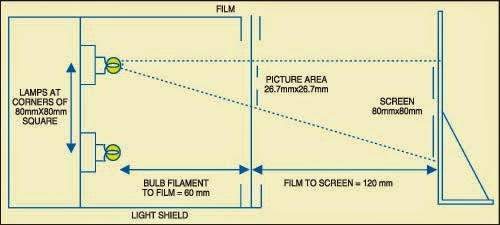
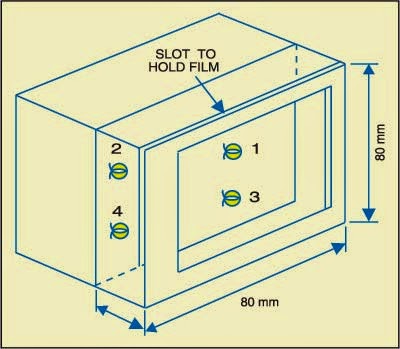
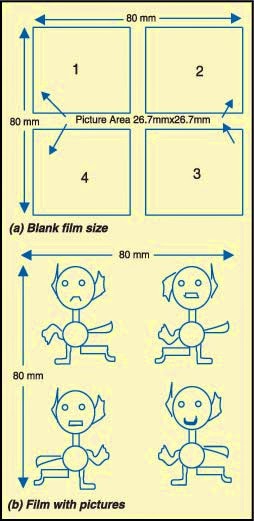
 |
| High impedance balance output circuit |



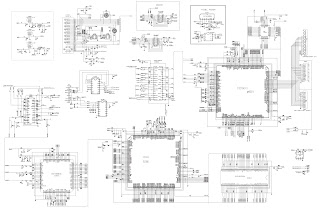

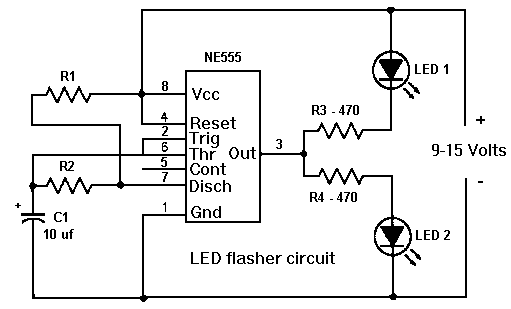
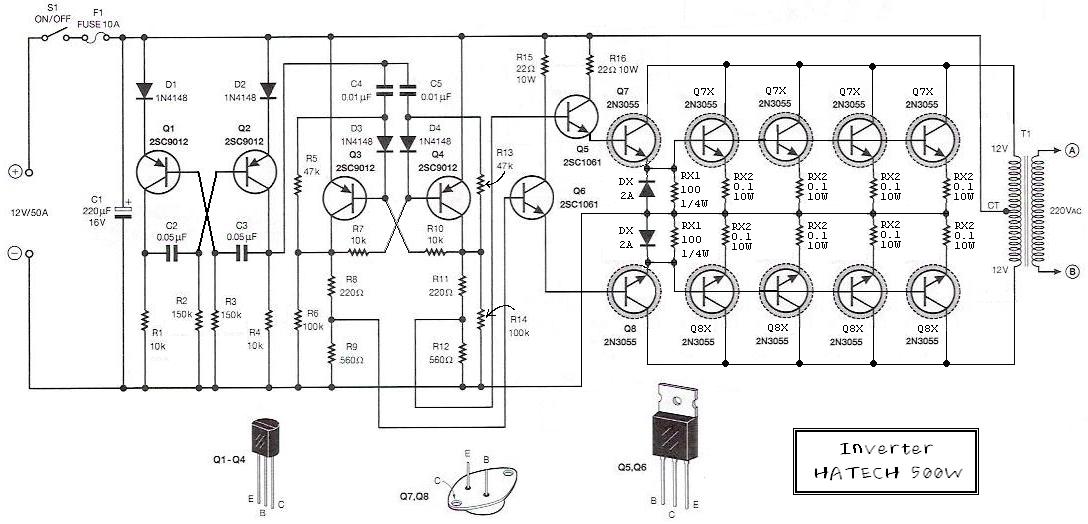
Here is a simple circuit for music-on-hold with automatic shut off facility. During telephone conversation if you are reminded of some urgent work, momentarily push switch S1 until red LED1 glows, keep the telephone handset on the cradle, and attend to the work on hand. A soft music is generated and passed into the telephone lines while the other-end subscriber holds. When you return, you can simply pick up the handset again and continue with the conversation. The glowing of LED1, while the music is generated, indicates that the telephone is in hold position. As soon as the handset is picked up, LED1 is turned off and the music stops.
Circuit diagram :

Music-On-Hold for Telephones Circuit Diagram
Normally, the voltage across telephone lines is about 50 volts. When we pick up the receiver (handset), it drops to about 9 volts. The minimum voltage required to activate this circuit is about 15 volts. If the voltage is less than 15 volts, the circuit automatically switches off. However, initially both transistors T1 and T2 are cut off. The transistor pair of T1 and T2 performs switching and latching action when switch S1 is momentarily pressed, provided the line voltage is more than 15 volts, i.e. when the handset is placed on the cradle. Once the transistor pair of TI and T2 starts conducting, melody generator IC1 gets the supply and is activated. The mu-sic is coupled to the telephone lines via capacitor C2, resistor R1, and the bridge rectifier.
With the handset off-hook after a ring, momentary depression of switch S1 causes forward biasing of transistor T2. Mean-while, if the handset is placed on the cradle, the current passing through R1 (connected across the emitter and base terminals of pnp transistor T1) develops enough voltage to forward bias transistor T1 and it starts conducting. As a consequence, output voltage at the collector of transistor T1 sustains for-ward biasing of transistor T2, even if switch S1 is released. This latching action keeps both transistors T1 and T2 in conduction as long as the output of the bridge rectifier is greater than 15 volts. If the handset is now lifted off-hook, the rectifier output drops to about 9 volts and hence latching action ceases and the circuit automatically switches off.
EFY lab note. The value of resistor R2 determines the current through resistor R1 to develop adequate voltage (greater than 0.65 volts) for conduction of transistor T1. Hence it may be test selected between 33 kilo-ohms and 100 kilo-ohms to obtain instant latching.) The total cost of this circuit is around Rs 50.
Author : SIBIN K. ZACHARIAH - Copyright : Electronicsforu
